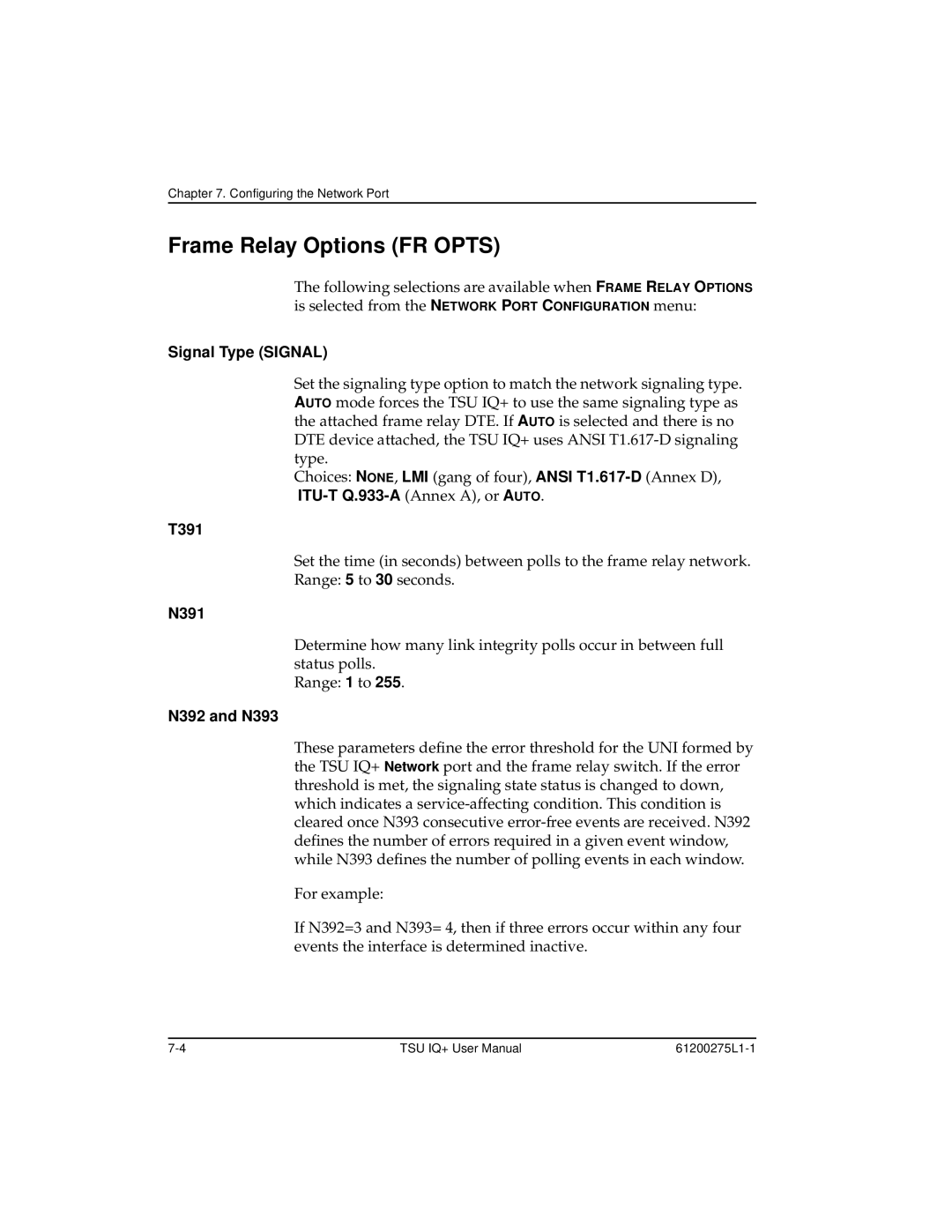
Chapter 7. Configuring the Network Port
Frame Relay Options (FR OPTS)
The following selections are available when FRAME RELAY OPTIONS is selected from the NETWORK PORT CONFIGURATION menu:
Signal Type (SIGNAL)
Set the signaling type option to match the network signaling type. AUTO mode forces the TSU IQ+ to use the same signaling type as the attached frame relay DTE. If AUTO is selected and there is no DTE device attached, the TSU IQ+ uses ANSI
Choices: NONE, LMI (gang of four), ANSI
T391
Set the time (in seconds) between polls to the frame relay network. Range: 5 to 30 seconds.
N391
Determine how many link integrity polls occur in between full status polls.
Range: 1 to 255.
N392 and N393
These parameters define the error threshold for the UNI formed by the TSU IQ+ Network port and the frame relay switch. If the error threshold is met, the signaling state status is changed to down, which indicates a
For example:
If N392=3 and N393= 4, then if three errors occur within any four events the interface is determined inactive.
TSU IQ+ User Manual |
|
